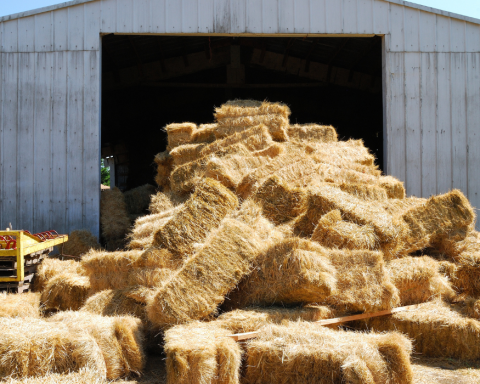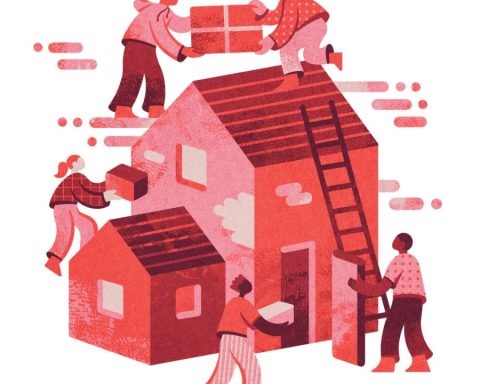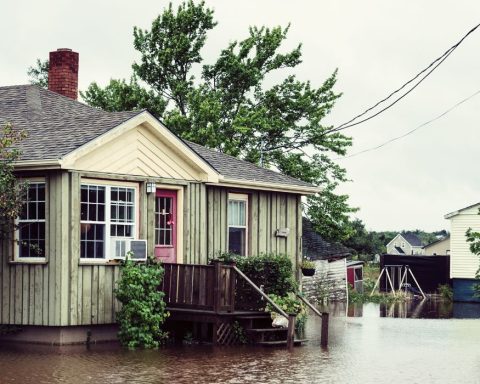Earlier this year, builders completed what might seem like a standard high-rise in Brampton, Ontario, a rapidly growing suburb of Toronto. Dubbed Uniti, the project is a purpose-built rental apartment building with 302 units next to a commuter rail station.
But what makes this development – which includes 12 deeply affordable apartments to be operated by a local non-profit – unusual is that it is hooked into a geo-exchange system. That means it is tapping the earth’s heat, rather than conventional gas-fired boilers, to warm and cool the building’s interior spaces.
According to Adam Molson, vice-president of the Daniels Corporation, the project’s developer, Uniti is one of the first completed projects in the company’s 2030 decarbonization strategy, which begins with geo-exchange systems or air-source heat pumps in all its new rental projects, followed by the use of low-carbon concrete, efficiency improvements in the building’s exterior walls, rooftop solar and mass timber.
“We broke the ice and got over the fear factor,” Molson says of the geo-exchange system. “That essentially opened the floodgates to us being able to move to geothermal as our default heating system. Unless there are site-specific reasons to pursue another technology, which there may be, we’re not using natural-gas space heating anymore.”
The one-two punch of the climate crisis driving up utility bills in buildings that already generate 40% of global carbon emissions, while the housing crisis leaves few affordable rental options, puts units like the ones in Uniti in high demand.
Across North America, rental units represent roughly one-third of dwellings, and steep rent hikes in many metropolitan areas have added enormous strain to those household budgets. A March 2024 research report for Canada’s Task Force for Housing and Climate recommended that purpose-built rentals account for 35% to 40% of all new starts for the balance of the decade.
With condos, there’s little incentive for developers to invest in low-carbon systems because the benefits don’t accrue to the developers, whose goal is to sell off the units as quickly as possible, nor their investors – that is, the people who buy condos and rent them out, and thus pass on the utility costs to their tenants. But the math works quite differently for an asset manager that’s going to own and operate an apartment building for decades, especially if their institutional investors have explicit ESG (environmental, social and governance) targets, including emission reductions, as is the case with Choice Properties, the real estate investment trust that partnered with Daniels to build Uniti. What’s more, geo-exchange infrastructure, which remains costly to build and install, is ideal for larger buildings that can create the economies of scale necessary to deliver those lower operating costs over the long term. When the planets align, the sustainability investments yield meaningful emission reductions and a payoff for the owner.
Investors are shopping for rental buildings
In fact, there’s good evidence in both Canada and the United States that investment capital is now flowing into rental apartments at a pace not seen in decades. There are various reasons for the shift, including the high interest rates of recent years that have scared off condo buyers, as well as the fact that all forms of housing, including condos, have become so expensive that most people are completely priced out of the market.
While the market transition toward purpose-built rentals may bring about more lower-carbon housing because landlords have a financial incentive to minimize energy costs, the change isn’t sufficient to guarantee a payoff that is both green and affordable, nor does this trend assure a supply of affordable rentals. Deep retrofits of drafty older rental stock remain financially daunting, especially for affordable housing providers. Some landlords have struggled to comply with strict decarbonization regulations cropping up in jurisdictions like British Columbia and California, among them building code requirements to “fuel switch” (i.e., from gas to electricity), slash carbon embodied in building materials (e.g., by constructing with mass timber to reduce concrete) or add battery storage systems.
RELATED:
Canada needs to catch up on co-op housing: Three lessons from Europe’s success
Here’s the secret to cooling India’s buildings
Others, meanwhile, have resorted to greenwashing, touting essentially cosmetic environmental improvements in their buildings as a way of justifying rent hikes and displacing low-income tenants. Case in point: a rental high-rise in northwest Toronto, where tenants last year staged a rent strike, accusing the owners of using an energy retrofit renovation to justify above-guideline rent increases of as much as 7% to 10% (Ontario landlords are permitted to increase rents by no more than 2.5% per year but can apply for more if they’ve renovated the building significantly). “This year, my rent went up from $2,100 to almost $2,400 per month,” one tenant told The National Observer. “I don’t know any tenants in Ontario right now who are getting a 10% increase in their income every year, including myself.” (The landlord, Dream Unlimited, disputed the accusations.)
Indeed, as tenant advocacy groups point out, there’s no guarantee that the benefits from energy-efficiency improvements – everything from installing new appliances to replacing drafty windows or baseboard heaters – will trickle down to renters in the form of lower rental rates or reduced energy bills. “We do believe that in many ways, tenants and landlords have differing interests,” says Eddy Roué, chair of the Central Ottawa chapter of ACORN (Association of Community Organizations for Reform Now), a tenants’ advocacy union that recently launched an “eco-tenant” platform for its membership. “But when it comes to things like energy efficiency, this can absolutely be a win-win scenario.” The wrinkle, he adds, is finding the right way to pressure property managers to make the investments.
Roué cites ACORN’s advocacy strategy, which includes calling for reforms such as anti-eviction covenants on publicly subsidized retrofit projects, free heat pumps for low-income tenants, and a requirement that landlords “demonstrate that the retrofits will result in benefits for tenants, particularly in cases where the landlord pays the energy costs.”
What it takes to green a retrofit
Retrofits on older rental apartments are capital-intensive because they involve the transplant of vital organs – from mechanical HVAC systems to insulation, windows and exterior cladding – in structures filled with tenants. Many property managers will stage these retrofits over a longer period, replacing the various elements only when they’ve reached the end of their usable life. Some cleantech start-ups are also developing approaches to take some of the pain out of retrofits, such as New York–based Hydronic Shell Technologies, which is developing a concept for exterior facade panels that incorporate heat pumps.
The question confronting policy-makers is how to accelerate this transition.
Certain jurisdictions have made energy retrofits mandatory. New York City, for example, enacted Local Law 97, which requires landlords of large buildings, many of them rentals that use carbon-intensive heating oil, to meet emission targets or face stiff fines. Some New York landlords have also experimented with so-called green leases, which are structured so that the property manager and tenants share the upfront capital costs for retrofits while also dividing up the savings from lower utility bills.
Other governments have opted for carrots instead of sticks. The State of Massachusetts last year established a Community Climate Bank to fund low-carbon projects aimed at affordable rental housing agencies. The Canadian government, in turn, has begun offering loans for purpose-built rental development and retrofit projects in multi-family buildings.
It can sometimes just be cheaper to knock down a building rather than retrofit it. It’s hugely destructive and very environmentally unfriendly.
—Tom Wainwright, London’s Royal Holloway University
Yet some places have seen backsliding from earlier efforts to decarbonize rental housing, including housing targeted at low-income households. Before the election of a Labour government in the United Kingdom last summer, initiatives to backstop energy-efficiency programs targeting private rental housing were either stalled or cancelled.
Real estate expert Tom Wainwright, a professor of strategy and entrepreneurship at London’s Royal Holloway University, also points to unresolved policy contradictions. In the U.K., rental housing developers no longer pay value-added taxes on their projects. However, there’s no such exemption for retrofits, which creates a perverse incentive for landlords, including the removal of existing apartments from the market. “It can sometimes just be cheaper to knock down a building rather than retrofit it,” Wainwright observes. “When you think about all the embodied carbon in the concrete that gets knocked down or landfilled and doesn’t get recycled, it’s hugely destructive and very environmentally unfriendly.”
Even in climate- and rental-friendly jurisdictions, like Germany, the payback on energy retrofits is difficult to realize. As a 2022 University of Regensburg study found, landlords couldn’t expect to recoup their investment by charging a “green premium” for retrofitted rental units, even after the government kicked in some of the carbon levy as an incentive.
Scaling low-carbon rentals
The prospect of building new low-carbon rental projects involves far fewer obstacles and has attracted the attention of not just policy-makers and investors, but also innovative designers eager to push well beyond the familiar green benchmarks, like LEED certification.
Shawn Lapointe, a principal with Vancouver-based Henriquez Partners Architects (HPA), describes one such initiative the firm has created with developer Westbank, dubbed Prototype. It’s an attempt to determine an optimal design for a 25-storey mass timber building in Vancouver (that will use some steel) while minimizing cement-hungry underground parking and exterior windows (floor-to-ceiling “glass curtain walls” being incredibly inefficient). They’re also folding in plans for a connection to a local district-energy utility. (District-energy systems distribute low-emission forms of energy such as deep lake water for cooling or recovered sewer gas to run boilers to generate steam for heat.) Prototype, moreover, will be entirely rental, with 20% of the units set at below-market rates and a third suitable for families with children. The project is located on a transit corridor in Vancouver where the city is encouraging rental development by offering density bonuses to builders willing to forgo the condo model.
What’s more, the design is intended to be portable, meaning that all of HPA’s calculations can be put to use in other locations. “We wanted to make sure that what we’ve developed works for a variety of different sites and conditions, so it can be as replicable as possible,” says Lapointe, who is overseeing Westbank’s Mirvish Village development in downtown Toronto. “We’re also hoping to be able to share that information with others.”
As he looks at Daniels Corporation’s project pipeline, Adam Molson reckons that the current policy and investment climate favours low-carbon purpose-built rentals. With governments scrambling to meet public outcry over the lack of affordable housing, the public policy environment has become highly receptive, with grant programs and tax credits meant to assist both affordable rental and previously unattainable carbon-reducing features, such as geothermal heating.
There is one storm cloud in Canada, however: natural gas prices, which are now high enough to make the math work on the geo-exchange infrastructure planned for future Daniels/Choice rental projects. But if a future Conservative government slashes or eliminates Canada’s carbon-pricing system, all bets are off. “Right now, you have a payback that might be 10 to 15 years,” Molson says. Without carbon pricing to prime the pump of sustainable rental housing, “you could have a payback that’s well in excess of that, and maybe no longer under-writeable on a purely economic case.”
In that case, it’s hard to imagine that the much-touted financial benefits of “axing the tax” will trickle down to renters living in all those gas-heated buildings. Either way, sky-high rents and energy-inefficient apartments are a burden millennials and Gen Z simply should no longer tolerate.
John Lorinc is a journalist and author specializing in urban issues, business and culture.






